2024 Hyundai Elantra SEL Review: Five Star Driver

2024 Hyundai Elantra SEL Quick Take
The Hyundai Elantra sees useful updates for 2024, with a freshened face and even more standard tech. With the compact segment continuing to see challenges from the small SUV crowd, Hyundai's now-smallest sedan majors on what sedans have long done best: offering a ton of space mixed with great fuel economy.
It's not the most exciting choice in the segment, but be honest with yourself: how much does that really matter?
The 2024 Hyundai Elantra feels tailor-made for ride-share purposes.
It’s a compliment, really. For a car to succeed in the modern taxi-and-taxi-adjacent scene, it needs to be spacious, efficient, and relatively practical for both driver and passengers. It needs to land dead-center in a multi-layer Venn diagram all without breaking the bank. That’s where the mid-trim model, known as SEL in the US and Preferred in Canada, really stands out amongst the ’24 Elantra family. The just-right choice isn’t so fancy that you’ll regret piling three semi-coherent fares in for a cross-town trek, yet it’s got enough toys to impress the carpool gang from your day job.
This is an exceedingly rational small car choice, and there is nothing wrong with that.
What’s new for 2024?
Hyundai has finessed its smallest sedan’s look for this model year. The fractal look remains, but with a newly furrowed brow up front, emphasizing that low, low nose. The grille is now shorter, filled with a tile-like pattern that provides a visual nod to the popular Tucson and Palisade without being a lazy copy. Around back, a redesigned bumper gently curves upwards, pulling visual weight from the bottom of the car. A handful of new exterior color choices and alloy wheel designs round out the changes; in this case, Ecotronic Grey along with handsome and reasonably sized 17-inch five-spoke items.
Hyundai has freshened up the cabin too, with improved materials and additional technology, including a digital key and (finally) USB-C ports front and rear. The standard lineup of safety features grows longer this year too, with rear side airbags and rear seatbelt reminder, along with more haptic feedback through the steering wheel for driving assists.
Powertrain and fuel economy: still focused on fuel-sipping
Hyundai hasn’t changed the Elantra’s powertrain recipes, from the mainstream models right through to the red-hot Elantra N. This four-door once again employs a perfectly adequate 2.0-liter four-cylinder supplying 147 horsepower and 132 pound-feet of torque to the front wheels. A continuously variable transmission is the only choice here, as the manual became an N-only affair a few years ago.
It’s a fine setup for everyday driving. The CVT is one of the better ones on the market, keeping revs relatively low unless that white SUV in the right lane needs a-passin’. Keep your foot in and the Elantra’s steam wanes much beyond that, anyway.
You might expect fuel economy to top the class, since the Elantra makes do with some of the lowest power figures. It posts solid figures: the official combined figure is 34 mpg (6.8 L/100 km) and we had no trouble matching that. But it’s down on the likes of the Honda Civic and Toyota Corolla, both of which offer more power.
Handling and drivability: Doing the job
The laidback feel of the powertrain is matched by the steering, which is single-digit light yet accurate. Moderate levels of body roll make it clear where the Elantra’s priorities lie. High-speed stability is great, owing to that elongated wheelbase. The low nose can scrape on aggressively angled parking lot entrances, mind you.
The relatively small wheels—more on those later—mean that the Elantra lacks the ultimate road-holding and agility of other competitors in the class. If you’re looking for an adroit and entertaining compact car look elsewhere, either in the direction of the Honda Civic or Mazda3 for the truly mainstream stuff, or at the more spirited Elantra N-Line.
Ride quality and comfort: Five stars for comfort
I’d like to take a moment to thank whomever at Hyundai resisted the urge to fit the non-N Elantras with 18-inch wheels. The tall sidewalls and modest contact patch give the Elantra SEL (Preferred) a distinct comfort bent, gelling well with a soft suspension tune. The Hyundai rolls with the punches of the modern urban jungle, taking the sting out of the inevitable construction zones and settling nicely at highway speeds.
There’s just one catch: more outside noise permeates the cabin than you might expect, especially on the highway. It’s not wind, but the general din of everything else.
Outside of perhaps the Civic, no other vehicle in this class drops its drivers so low in the front seat. I personally like it, with the accompanying low cowl making it easy to place the Elantra on the road. It’s refreshing to drop into fabric seats, too. Comfortable on longer hauls, the Elantra’s thrones offer good lateral support but zero power adjustment. The back row has serious legroom (38.0 inches / 962 millimeters) and while headroom is technically unchanged with the sunroof, the resulting bump is noticeable for taller folks.
Interior style and quality: Detail changes
The Elantra’s striking cabin design carries over with a few detail changes. The door panels now feature more soft-touch material, which was a sore point in the pre-facelift model. Ambient lighting now features in the mid-level model too, bringing a welcome (subtle) bit of premium feel. Of course, the divisive—literally—center console support bar remains, keeping those front-seat riders in no doubt that they’re guests. It still has a rough plastic seam on the underside exactly where I rest my hand.
One important part of the experience worth noting: Hyundai Canada doesn’t offer a 60/40-folding rear bench on this trim. Something to keep in mind if you’re ever going to be transporting longer items.
Tech and safety: Solid suite
The Elantra debuted Hyundai’s twin-screen approach, and not much changes here. The dual 10.25-inchers here are optional on the mid-trim, making the Elantra one of the most affordable models to feature native navigation. The main screen still runs the old user interface, which does the job but is lacking the style and responsiveness of the segment’s latest rivals. I appreciate the instrument cluster’s straightforward operation, though the pictured cube-graphic layout is visually distracting. Every few seconds those things flash for… reasons.
Hyundai includes a helpful list of standard driving assists across the Elantra family, including automated emergency braking, blind spot monitoring with rear cross-traffic alert, and lane keep assist. The only gap is adaptive cruise control, which shows up on this trim’s optional tech package in the US (and is standard on the top trims in both countries). Not only does it bring in full-range cruise control with stop-and-go, it augments the forward collision alert with sensors for cyclist and junction-turn functionality.
Value, dollars, and sense: Affordable everyday option
This mid-level Elantra rings in at $24,725 ($25,574 CAD) after destination but before options, or about two grand above the base trim.
Both the US and Canada offer a package, dubbed Convenience ($1,750) or Tech ($1,950 CAD), respectively. The shared features in both are limited to the 17-inch wheels and sunroof. Americans gain the afore-mentioned safety upgrades and folding rear seats, and a wireless charger, which isn’t available on the mid-trim in Canada. The Convenience package also includes heated front seats and (leather) steering wheel, all of which is included as standard in Canada.
Meanwhile, the Canadian Tech package adds the bigger screens, Bluelink, Sirius XM, dual-zone climate control, and ambient lighting.
The total bill? $26,475 ($27,774 CAD), which is darned reasonable for this much content. Of note, the Limited now includes a 360-degree camera in the US, which is exceedingly rare in this part of the market.
2024 Hyundai Elantra SEL Review: Final thoughts
The 2024 Hyundai Elantra SEL (Preferred) is not an exciting vehicle in the traditional sense—and it shouldn’t be. Yet what it lacks in fun-to-drive nature is made up for with a satisfying feeling of value for money. And who doesn’t find a little bit of extra cash exciting? Just don’t forget to tip your driver.
Become an AutoGuide insider. Get the latest from the automotive world first by subscribing to our newsletter here.
Pros | Cons |
|---|---|
Affordable | Down on power and efficiency |
Comfort-first ride quality | Hints of decontenting |
Good standard safety kit | Lack of standard adaptive cruise control |
2024 Hyundai Elantra FAQs
- Q: How much should I pay for a 2024 Hyundai Elantra?
- A: The starting price for 2024 models is $22,775 ($23,774 CAD) including destination.
- Q: Does the 2024 Elantra have a 360 camera?
- A: Yes, if you opt for the top Elantra Limited trim in the US.
- Q: What is the best Elantra model?
- A: We believe it's this one: it pairs plenty of high-demand features with a reasonable price tag.
Specifications | |
|---|---|
Engine: | 2.0L I4 |
Outputs: | 147 hp, 132 lb-ft |
Transmission: | CVT, FWD |
US Fuel Economy (mpg): | 31/40/34 |
CAN Fuel Economy (L/100 km): | 7.6/5.9/6.8 |
Starting Price (USD): | $22,775 (inc. dest.) |
As-Tested Price (USD): | See text |
Starting Price (CAD): | $23,774 (inc. dest.) |
As-Tested Price (CAD): | $27,774 (inc. dest.) |

Kyle began his automotive obsession before he even started school, courtesy of a remote control Porsche and various LEGO sets. He later studied advertising and graphic design at Humber College, which led him to writing about cars (both real and digital). He is now a proud member of the Automobile Journalists Association of Canada (AJAC), where he was the Journalist of the Year runner-up for 2021.
More by Kyle Patrick







































































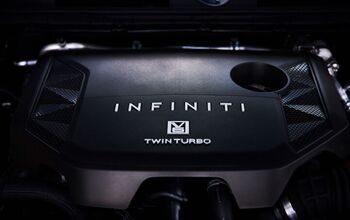
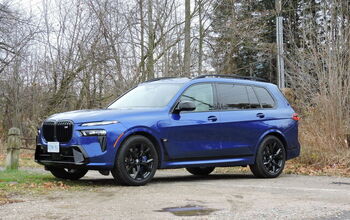


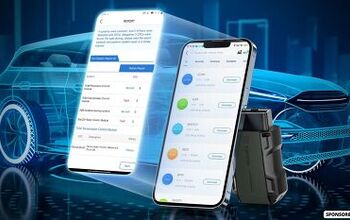
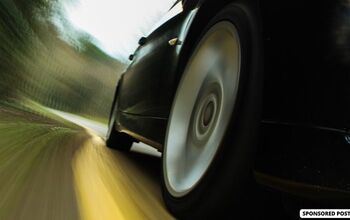
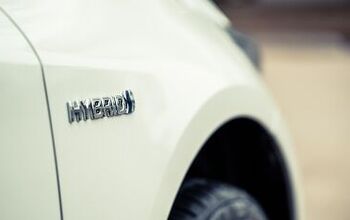

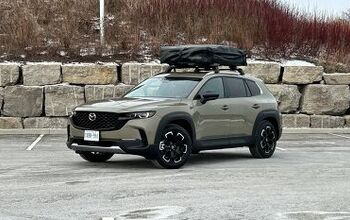
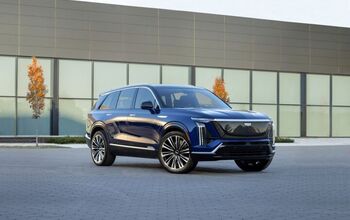
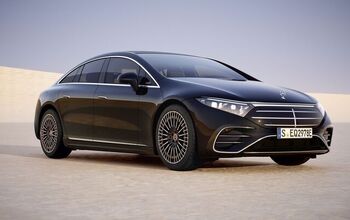
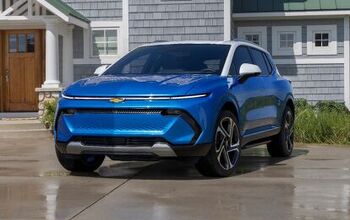

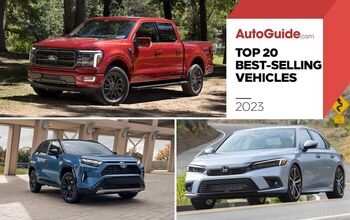

Comments
Join the conversation
why does a car need a usb c port? is that where we put in the fuel?